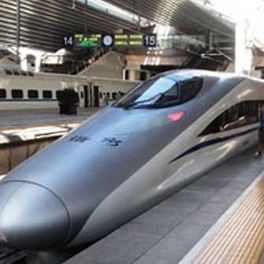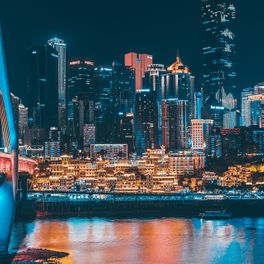Last updated: June 26, 2025
How to Get Around Shanghai: Your Complete Transportation Guide
Shanghai's sprawling metropolis of 26 million people might seem daunting at first glance, but the city's transportation network is surprisingly tourist-friendly once you know the ropes. Having navigated these streets for years, the good news is that getting around Shanghai is far easier than you might expect, even without speaking a single word of Chinese.
The Shanghai Metro: Your New Best Friend
The Shanghai Metro should be your go-to transportation method. With 20 lines covering over 800 kilometers, it's the world's longest metro system and connects virtually every corner of the city you'll want to visit. The network is clean, efficient, and refreshingly affordable – a single journey costs between 4-9 RMB (roughly $0.60-$1.30), regardless of how far you travel.
What makes the metro particularly foreigner-friendly is the bilingual signage throughout. All stations display names in both Chinese characters and English, and announcements are made in both languages. Download the “Explore Shanghai Metro Map” found on both the iOS App Store and Google play, for an easy to use English companion helping know which lines to take. It even includes exit maps, which might not seem important right now but which are really handy on the occasion you get your directions mixed up.
The metro runs from approximately 5:30 AM to 11:30 PM, with extended hours on weekends. Rush hours (7:30-9:30 AM and 5:30-7:30 PM) can be intense, but trains run every 2-3 minutes during peak times. For major attractions, you'll find the Bund accessible via East Nanjing Road Station (Lines 2 & 10), Yu Garden via Yuyuan Garden Station (Line 10), and the French Concession via Shaanxi South Road (Lines 1, 10 & 12).
Payment is straightforward with the Shanghai Public Transportation Card, available at any station, or increasingly through Alipay and WeChat Pay if you've set up mobile payments. Unfortunately you can't tap your foreign credit cards at the gates at this stage.
DiDi: The New Standard for Private Transport
DiDi has completely transformed Shanghai's transportation landscape and is now the primary way locals and visitors get around by car. This Chinese ride-hailing giant (think Uber, but bigger) has essentially replaced traditional taxi-hailing, making it your go-to option for private transport.
Accessible through Alipay's mini-programs or the standalone DiDi app, it eliminates virtually every pain point of traditional taxis. No language barriers, no cash needed, no wondering if you're being overcharged – everything is transparent upfront. You'll see your driver's photo, car details, location, estimated arrival time, and exact fare before confirming your ride.
DiDi offers multiple service tiers to suit different budgets and preferences. Express (kuaiche) is the most economical option, typically 15-30% cheaper than traditional taxis. Comfort provides newer vehicles and higher-rated drivers for slightly more. Premium and Lux offer upscale experiences at correspondingly higher prices. There's even a taxi option within DiDi that connects you with official taxi drivers – often easier than street-hailing.
Pricing starts around 12-15 RMB for short trips within central areas, with most cross-city journeys costing 25-50 RMB. During peak hours or bad weather, surge pricing can increase costs significantly, sometimes doubling the base fare. The app clearly shows surge multipliers, so you can decide whether to wait or pay the premium.
The convenience factor cannot be overstated. Your driver can see your exact pickup location on GPS, the destination is automatically translated, and payment processes seamlessly through your linked payment method.
Traditional Taxis: A Fading Option
While Shanghai still has traditional taxis street-hailing has become increasingly difficult. Many drivers now primarily work through DiDi rather than cruising for passengers, especially in central areas where tourists typically stay.
If you do manage to hail a traditional taxi, expect the same pricing structure as DiDi's taxi option (around 14 RMB base fare, then 2.7 RMB per kilometer), but you'll face the old challenges: potential communication barriers, cash-only payments, and no upfront pricing transparency. Honestly, unless you stumble upon an available taxi right when you need it, you're better off using DiDi even for official taxi rides.
Buses: For the Adventurous
Shanghai's bus network is comprehensive and incredibly cheap – most rides cost just 2 RMB. However, unless you're comfortable with Chinese or particularly adventurous, buses can be challenging for tourists. Route information is primarily in Chinese, and buses can be crowded and confusing for newcomers.
That said, certain tourist routes are worth considering. The sightseeing buses (often marked with tourist symbols) connect major attractions and typically have some English signage. The Huangpu River ferry buses offer scenic routes between Puxi and Pudong for just a few RMB, providing gorgeous skyline views.
Walking: Don't Underestimate It
Shanghai is more walkable than many give it credit for, particularly in tourist-heavy areas. The Bund, French Concession, and Xintiandi are all excellent for walking, with tree-lined streets and pedestrian-friendly infrastructure. The Bund's waterfront promenade stretches for over a kilometer and connects several attractions.
However, Shanghai's size means walking between distant neighborhoods isn't practical. Use walking for exploring individual districts, then rely on public transport for longer distances. Always carry water – Shanghai's humidity can be intense, especially in summer.
Airport Transfers: Multiple Options
Getting to and from Shanghai's airports requires some planning. Pudong International Airport (PVG) sits about 40 kilometers from the city center, while Hongqiao Airport (SHA) is closer but still 15 kilometers out.
For Pudong arrivals you can take the metro (Line 2), but it’s going to take you over an hour to get the city center. Taking the Maglev train is a novelty and will cut that time down a little, but leaves you in the middle of nowhere and you’ll end up having to jump onto Line 2 anyway. DiDi and or taxi to the airport is very possible, however you’ll find it slightly difficult to find your DiDi driver as pickups are from a car park. We’d recommend booking an airport transfer with Trip.com to have someone waiting for you when you get there, and get a DiDi on your return to the airport.
From Hongqiao, Lines 2 and 10 provide direct metro connections to the city center and aren’t nearly as long as the trip to Pudong. Alternatively take a DiDi
Private Drivers: Luxury and Convenience
For maximum comfort, consider hiring a private driver, especially for day trips or if you're traveling in a group. Many hotels can arrange English-speaking drivers for 800-1,200 RMB per day. This option shines for visits to attractions outside central Shanghai, like the water towns of Zhujiajiao or Wuzhen, where public transport connections are less convenient.
Getting to Major Attractions
The Shanghai Tower and other Lujiazui skyscrapers are easily reached via Lujiazui Station (Line 2). For the Shanghai Museum and People's Square, use People's Square Station (Lines 1, 2 & 8). The iconic Jade Buddha Temple connects via Changshou Road Station (Lines 7 & 13).
For shopping at Nanjing Road, East Nanjing Road Station puts you right in the action.
Navigation Apps: Slightly More Complicated Than Usual
Let's address the elephant in the room – Google Maps doesn't work in China. But don't panic; you have excellent alternatives. Apple Maps functions perfectly and provides reliable directions for walking, driving, and public transport, complete with real-time metro information.
For the most comprehensive local experience, download Amap (also known as Gaode Maps), which now offers an English interface and is incredibly detailed. It provides the most accurate real-time traffic data, bus schedules, and even indoor mall navigation. The English version covers all major tourist areas and transportation hubs thoroughly.
Consider downloading Baidu Maps as well, even if you don't speak Chinese. While the interface is Chinese-only, it's invaluable when communicating with taxi drivers or locals who don't speak English – simply show them your destination on the map. Many Shanghainese are more familiar with Baidu's interface and can quickly understand where you want to go. Having multiple navigation options ensures you'll never get lost. As usual with China, it’s a better idea to download apps before you go, especially if you’re on Android as you won’t be able to access Google Play in China by default.
Final Tips
Mobile payments dominate, so check out our Alipay articles if you haven’t already. Download map apps before you travel, and don't be afraid to ask for help – many young Shanghainese speak some English and are generally helpful to tourists.
Shanghai's transportation system rewards a bit of preparation but offers incredible value and efficiency once you understand the basics. Whether you're marveling at the Bund's colonial architecture or exploring the trendy boutiques of Tianzifang, getting there is half the adventure. Good luck – but you probably won’t need it!



